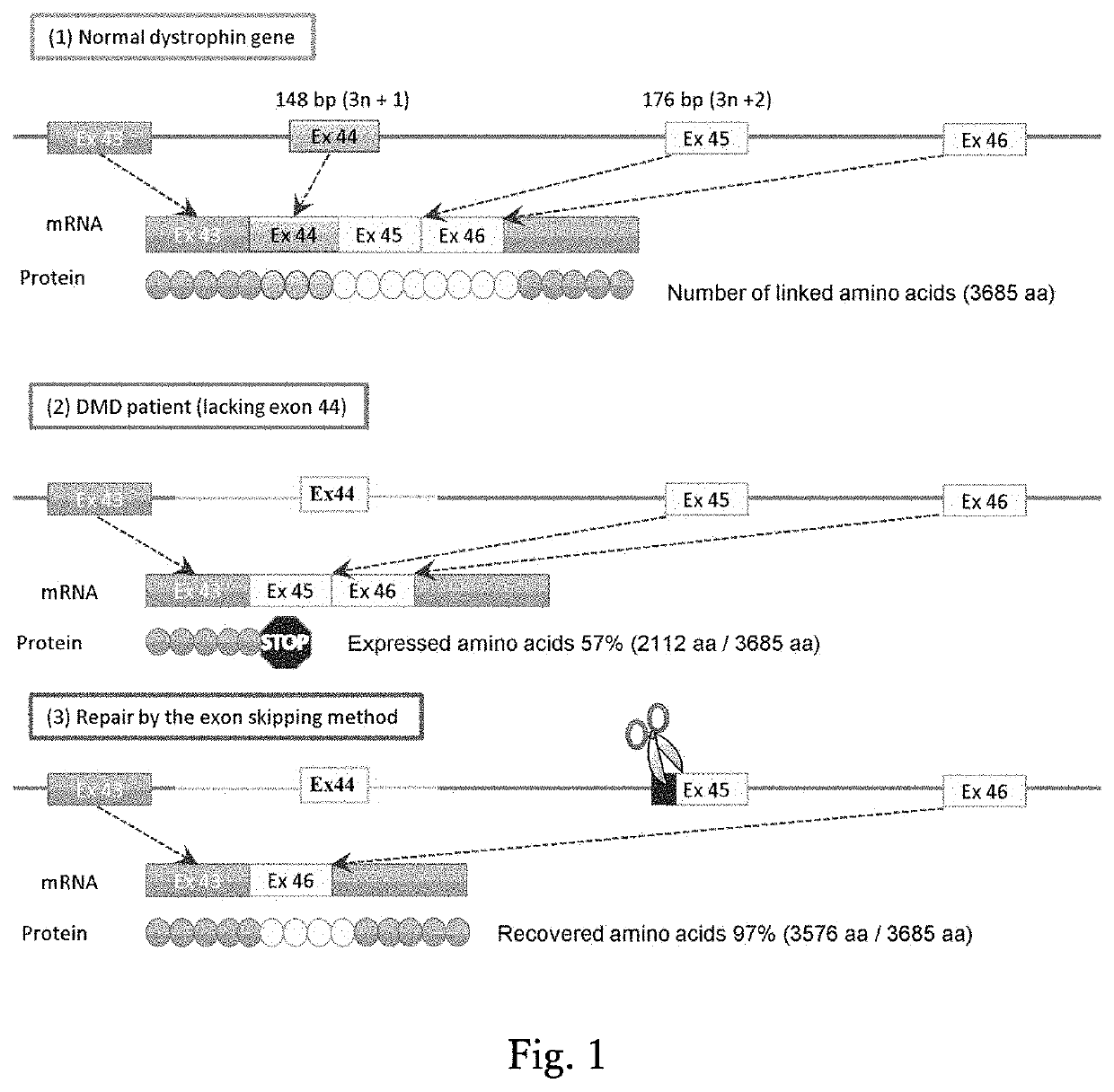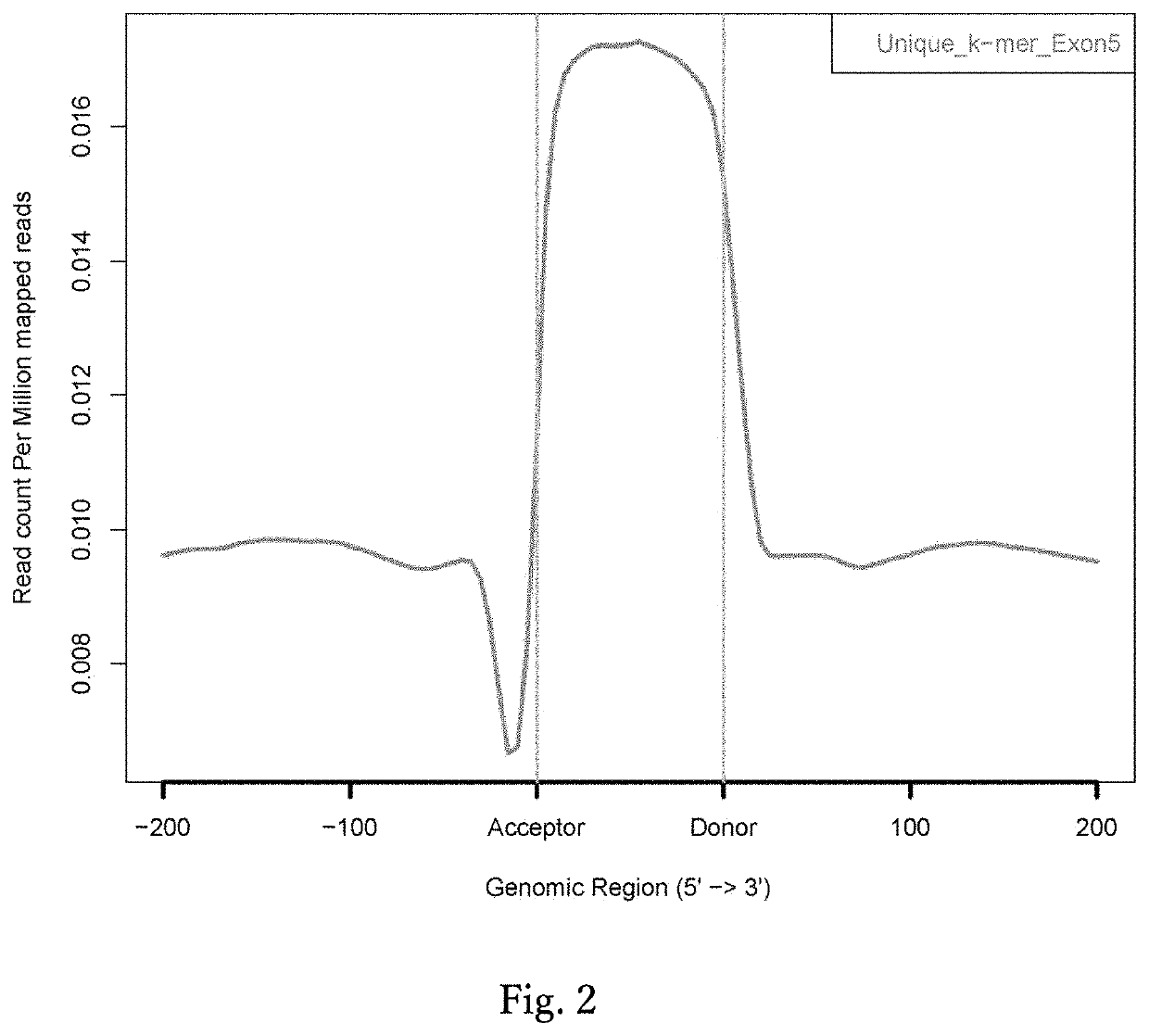Method for inducing exon skipping by genome editing
a genome editing and exon skipping technology, applied in the field of genome recombination technique, can solve the problems of increasing the risk of non-specific cleavage, no effective therapeutic method has been established, and the normal production of dystrophin protein becomes impossible, so as to achieve efficient analysis and increase the efficiency of exon skipping
- Summary
- Abstract
- Description
- Claims
- Application Information
AI Technical Summary
Benefits of technology
Problems solved by technology
Method used
Image
Examples
examples
[0109]The present invention is described below concretely by way of Examples. However, the present invention is not limited to the following modes.
[0110] in Relation to FIG. 2
[0111]Using a Perl script, base sequences of 10 to 16-mer (k-mer) with all combinations were generated. Using the Bowtie program (Langmead et al., 2009), the k-mer sequences generated were mapped on human genome hg19 without accepting a mismatch. Subsequently, k-mer sequences mapped only once on human genome hg19 were extracted, and a unique k-mer database was constructed (Li H L et al., Stem Cell Reports, 2015). Using the ngs.plot.r program (Shen L et al., BMC Genomics, 2014), which runs with the R language, the distribution of unique k-mers in 200 bp before and after all human exons were investigated and plotted.
[0112]DNA synthesis (GenScript) was carried out to prepare the pUC57-SphcCas9 vector, which has a Cas9 cDNA derived from Streptococcus pyogenes optimized for the human codon frequencies inserted there...
PUM
| Property | Measurement | Unit |
|---|---|---|
| temperature | aaaaa | aaaaa |
| voltage | aaaaa | aaaaa |
| size | aaaaa | aaaaa |
Abstract
Description
Claims
Application Information
 Login to View More
Login to View More - R&D
- Intellectual Property
- Life Sciences
- Materials
- Tech Scout
- Unparalleled Data Quality
- Higher Quality Content
- 60% Fewer Hallucinations
Browse by: Latest US Patents, China's latest patents, Technical Efficacy Thesaurus, Application Domain, Technology Topic, Popular Technical Reports.
© 2025 PatSnap. All rights reserved.Legal|Privacy policy|Modern Slavery Act Transparency Statement|Sitemap|About US| Contact US: help@patsnap.com



